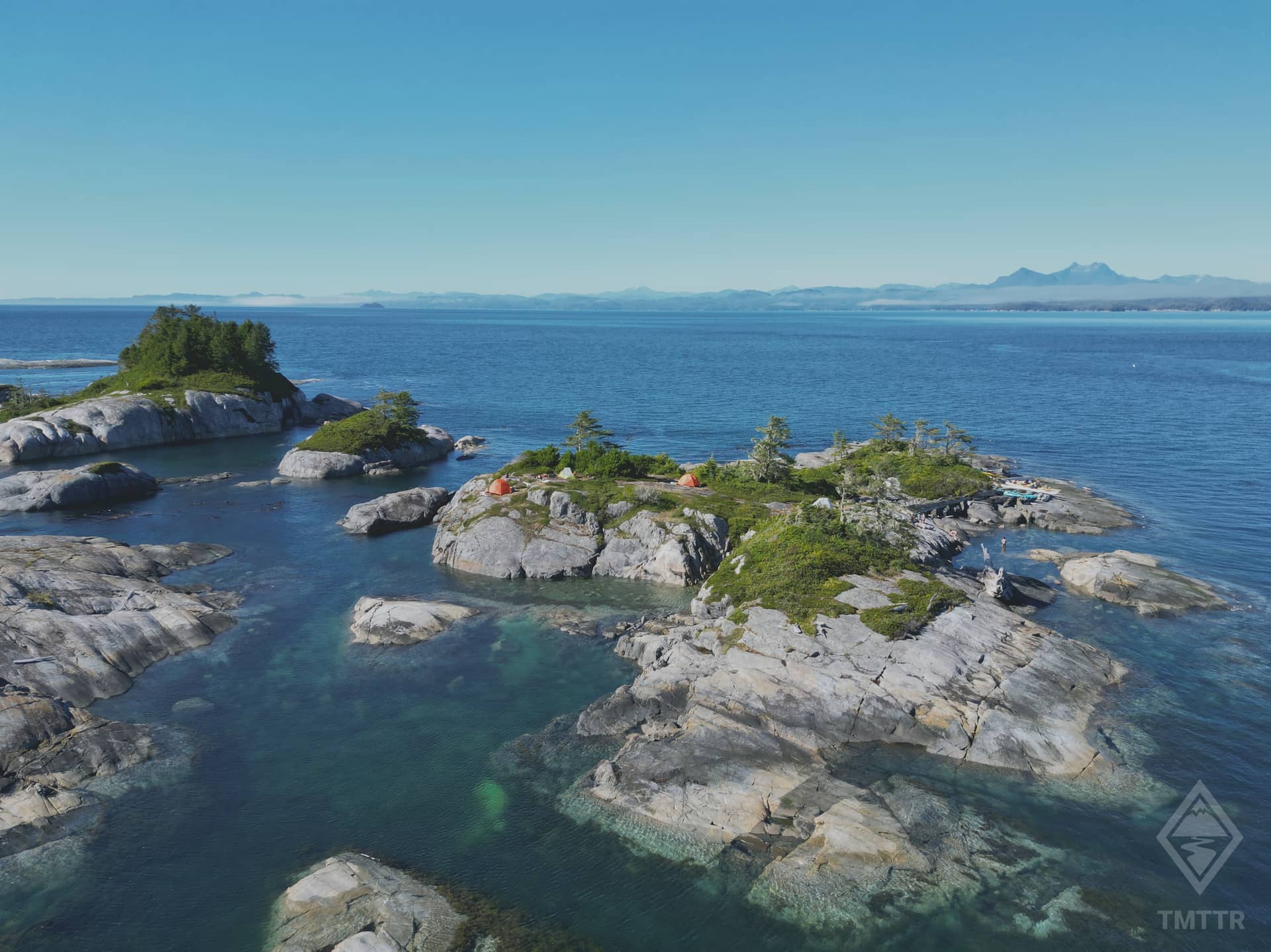
Route Details
-
Difficulty:Advanced Paddling
- Duration: 6 days
- Route Type: Exploration
- Camping: Yes
Summary
A glorious paddle out into the islands and inlets of Northern Vancouver Island. If doing a self-supported trip, you'll need a lot of paddling experience to tackle this trip. There are significant challenges to navigate, from crossing the Johnstone Straight, to navigating blind with fog and currents simultaneously, cruise ships, lack of signal, lack of water sources, strong currents, and time-sensitive crossings and launches. Do not take these warnings lightly - this is serious terrain with serious consequences.
For those who get the chance or build up the experience to make it happen, you'll be rewarded with a real show of nature. From eagles and seals, to sea lions, orca and humpbacks, this area is teeming with nature. Every campsite has its own appeal, from sunset views, to fishing spots and great whale-watching spots.
The good news is that for those with less experience, several companies offer guided tours in the area.
The map below is largely populated by BC Marine Trails and their network of supporters and partners. They work to support access and upkeep of the BC coastline. You can donate and find the full map here.
Navigation
-
Phone signal in BC is not reliable. Always carry an offline map. I recommend and use AllTrails+ for hiking or GaiaMaps for general adventuring. Google Maps does not always have reliable route mapping for backcountry adventures.
Don't Miss
Blackfish Sound is exactly what it says on the tin. A great spot for whale watching from a kayak - such a unique experience. We were incredibly lucky to see over 30 whales in 6 days.
Conditions & Ability
Paddler Ability
As I mentioned above, this is an area with multiple risk factors that need to be managed with significant experience from a trip leader or guided tour.
Intermediates
Intermediate paddlers with a few paddling trips under their belt, who are comfortable paddling for a few hours each day should seek out an adventure tour and a guided group. These guides are experienced, love what they do, and will teach you a ton about your environment and about paddling.
Advanced
Even as a more advanced paddler, a guided tour can be a good way to gain experience and knowledge of a particular area. If you have the experience and the skills or time to plan your trip, even better. As an experienced paddler, your options are endless to explore this magical area.
Tides & Currents
The general outgoing tide travels towards the Pacific, which means it'll take you generally West North West. That said, with all the islands around, the currents will depend on the specific area you're in. The most significant point to consider is the Plumper Islands, which realistically can only be traveled at slack tide. The currents in this area are strong, and cannot be out-paddled. Even 750m from the islands, you can already see, and feel the strong current. If you need to wait out the current, you can tuck in to Hanson Island and then pull into Leg Cove. But stay close to Hanson.
Wind
As per usual coastal kayaking trips, the wind gets up in the afternoon. Check the forecast and plan to finish paddling by 1 or 2pm on average, especially in more exposed areas.
Other Boats & Paddlers
With the paddling area being so remote, there is a significant chance you wont see anyone else or have any support. Make sure you have the necessary equipment and knowledge to get help if you need it.
Camping
-
Campsites around West Redonda are generally basic, offer space for a few tents, and have zero facilities.
With such committing distances between camp spots, all groups have to be a little accommodating of others and to try and make space if other groups arrive. With tides and time, it's not always feasible to move onto another location.
To be honest, all the camp spots we visited were great, so I wouldn't particularly recommend one over another. Plan your route according to the wind, how you feel, and the currents in particular.
Pack out everything you pack in, and enjoy these stunning camp spots.
Suggested Season
- Months: Jun - Sep
Location & Access
- Region: North Island
- Fire Region: Coastal Fire Centre
- From Vancouver: 7hr(s)
Getting There
-
Getting to Telegraph Cove from Vancouver involves a 2-hour ferry to Nanaimo, followed by a 4-hour drive along Route 19, the length of Vancouver Island. Campbell River is your last big supply point so make sure you get stocked up here, and fill up your water. You may not get another chance.
With such a long drive, I think it's well worth driving up the day before, giving you the flexibility to time your paddle out with the currents and tides, at which ever time suits. There is a campground ideally situated just behind Telegraph cove, which you find out more about on the Telegraph Cove Resort website.
-
If appropriate to reach this adventure, rent a car, or better still, reduce the demand for cars with Evo Car Share, Vancouver's car sharing network.

Add Review